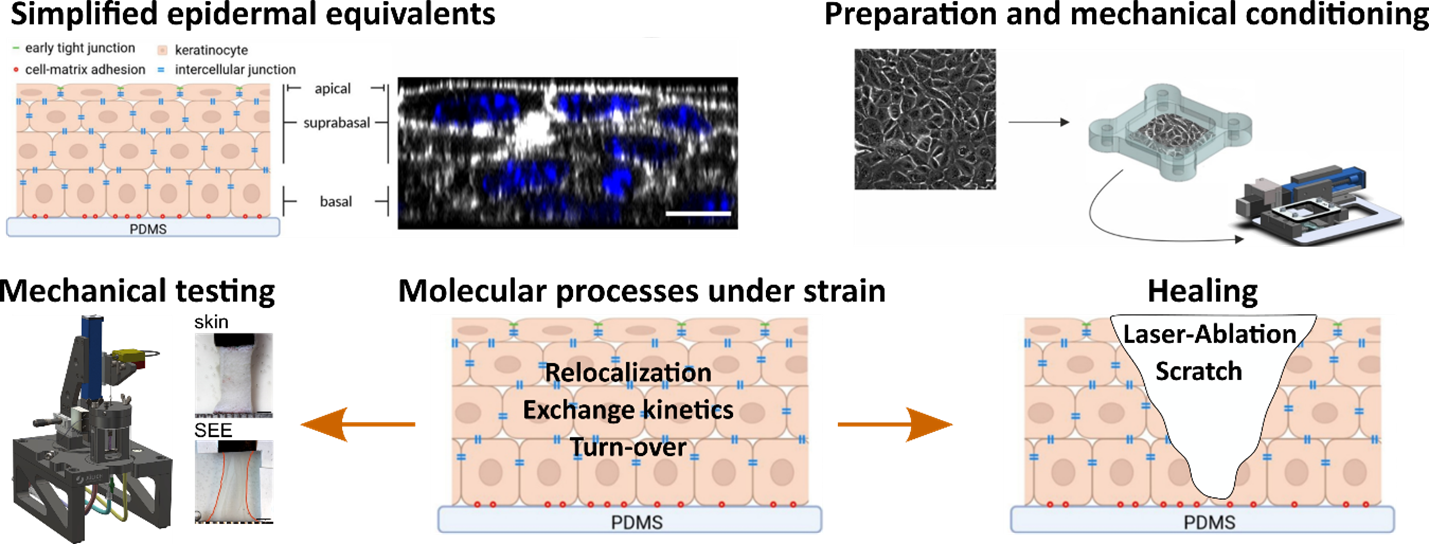3D-mapping of epidermal tissue mechanobiology during growth and upon wounding
Helmholtz-Institute for Biomedical Engineering, Division of Stem Cell Biology

Project overview. Simplified epidermal equivalents are prepared from primary and immortalized healthy keratinocytes or mutated keratinocyte cell lines. They are preconditioned by cyclic mechanical stretching in a self-made device. Subsequently, mechanical, and molecular properties are quantified under external strain and during healing of model wounds. Parallel experiments on skin ensure physiological relevance.







